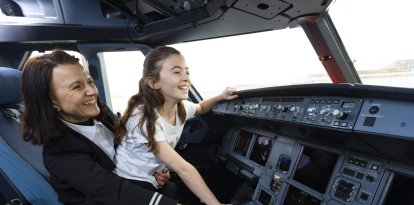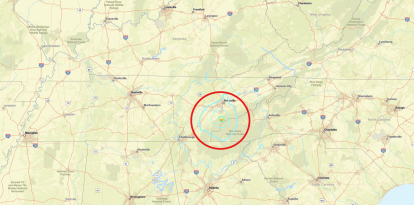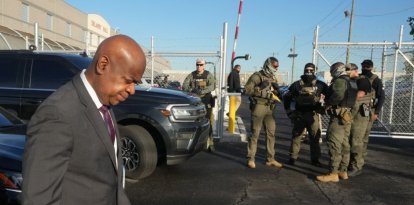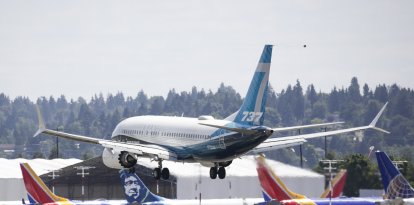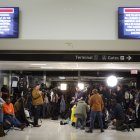Pilot With 500 Flight Hours, Understaffed Control Tower, and High-Altitude Flight: Experts Analyze Possible Causes of the Washington D.C. Collision
Authorities have not yet provided official details to explain the crash, but Transportation Secretary Sean Duffy said they had "early indications" of what happened.

Satellite image shows a general view of the area near Reagan Airport
Twenty-four hours after the deadliest air disaster in the United States in more than two decades, authorities still have not been able to shed light on the collision between an American Airlines plane carrying 60 passengers and 4 crew and a Black Hawk military helicopter near Ronald Reagan National Airport.
However, Transportation Secretary Sean Duffy noted that they had the "first indications" of what happened and affirmed that the tragedy was "absolutely preventable," promising to give more details in the future once the investigations are completed.
Despite the lack of official clarity, an understandable fact given that barely a day has passed since the tragedy and the priority is on the rescue work. Some experts have already begun to analyze the possible causes of the collision.
What happened to the control tower?
Two important details should be noted: the control tower and its operation before the accident.
According to a Federal Aviation Administration (FAA) report revealed by the New York Times, the control tower was operating at the time with lower staffing than usual.
The report indicates that staffing shortages at the time forced a single controller to simultaneously manage aircraft landing and takeoff operations and helicopter traffic, which usually must be performed by two controllers.
In a separate report, the Wall Street Journal revealed that this lone operator, shortly after 8:47 p.m. Wednesday, relayed a question and instruction to the military Black Hawk helicopter, which just 19 seconds later struck the American Airlines jet.
"PAT25, do you have the CRJ in sight?" the operator asked the U.S. Army Black Hawk, asking it to keep an eye on the American Airlines Bombardier jet carrying 60 passengers and four crew members.
"PAT25, pass behind the CRJ," the operator insisted. CRJ is aviation shorthand for Canadair Regional Jet.
Unfortunately, the indication came too late, and seconds later, the accident occurred. At this time, there is no evidence that the helicopter received the operator's command.
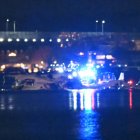
Updates
Trump sobre la colisión entre un avión de pasajeros y un helicóptero del Ejército: “Lamentablemente no hay supervivientes”
Emmanuel Alejandro Rondón
On the helicopter, where a routine training mission was being conducted, according to authorities, was an instructor pilot with 1,000 hours of flight time, which is considered "very extensive" experience, according to a report by Fox News Digital.
However, the co-pilot, i.e., the pilot in command, was a woman with 500 hours of flight experience, considerably less than the instructor.
While a Pentagon technical officer told reporters that the Black Hawk's route across the Potomac River is "relatively straightforward," some aviation experts explained that the runway at Ronald Reagan National Airport is one of the shortest in the country. The distance between helicopter and airplane altitude feet is often small.
A small runway
Originally designed to receive high-ranking officials in private or government aircraft, Reagan Airport has a runway almost twice as small as other commercial airports. It is the only one physically located within the District of Columbia.
Its location and dimensions carry a number of complications, including requiring pilots to avoid Washington's restricted airspace, with the White House and other monuments clearly visible on some approaches. Another challenge of landing is a runway 7,000 feet long, half the standard 13,000 feet of other airports in the country designed to receive large commercial aircraft.
In comments to the New York Post, John Wright, a former American Airlines pilot based in Washington, D.C., explained that while it is possible to operate safely at Reagan Airport, "The first few times you fly there, you usually are with [a fellow pilot] who’s really experienced. He’s kind of talking through it, too."
As a result, Wright noted that the shorter runway at Reagan Airport requires more concentration on the part of pilots during the approach and ideal communication during air traffic organization.
"It’s such a challenging airport to land a jet airplane at your focus is really on your airspeed, your altitude, your rate of descent," Wright told the NYP. "The last thing you’re looking for is to see if somebody’s crossing in your path."
Despite these difficulties, Wright noted that there was an obvious miscommunication between the control tower and the Black Hawk, an aircraft with a lot of leeway, as opposed to a large plane.
"Somehow something broke down between the helicopter’s clearance to be there and air traffic control tower," Wright concluded. "It’s kind of seems like a very preventable accident that shouldn’t have happened if normal procedures were followed."
The likely miscommunication, coupled with the shortage of personnel in the tower, might also add to the short prearranged flight distance between planes and helicopters, Jim Brauchle, an aviation attorney and former pilot, told the NYP.
According to official air navigation maps, there are two routes near Reagan Airport. The first is for helicopters, which must not exceed 200 feet in altitude, and the other is for commercial aircraft, which must fly around 500 feet on that stretch. But according to the WSJ, both planes were between 200 and 400 feet above the Potomac River at the time of the collision.
That was probably because a mile and a half before touchdown, the planes must make a 50-degree turn to line up with the runway at Reagan Airport, which creates a very small margin of error, Brauchle explained.
"When it makes that turn, it’s just under 500 feet, and then obviously it’s going to descend," Brauchle told the NYP. "Well, there’s also a helicopter route that goes right down the river that’s at or below 200 feet. And so you’ve got intersecting routes that are apparently de-conflicted by, you know, only several hundred feet — which is not a lot of room for a margin of error."
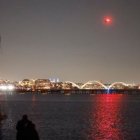
Society
FAA report reveals control tower was understaffed at the time of DC plane crash
Sabrina Martin
Moreover, this 300-foot distance between the two routes near Reagan Airport is ideal, as a practice, Federal Aviation Administration (FAA) rules allow pilots a standard 75-foot variance from the prescribed altitude.
In any case, in the absence of official confirmation, experts agree that the short distance between the routes and the communication failure between the control tower and the helicopter are indispensable to understanding the collision between the Black Hawk—piloted by a pilot with 500 hours of experience—and the American Airlines plane.
Alleged Violation of Regulations
The New York Times, citing four individuals briefed on the matter but not authorized to speak publicly, reported that the helicopter was apparently flying above the 200-foot altitude limit, reaching up to 300 feet and clearly violating regulations. Additionally, according to the report, the helicopter pilot had requested permission from air traffic control to use a specific route that allows helicopters to fly at a maximum of 200 feet and reach the shoreline on the east side of the Potomac River—an approach that would have allowed the pilot to avoid the American Airlines plane.
However, according to the NYT sources, the helicopter deviated from the authorized path, known as Route 4 at Reagan.
By flying at a higher altitude and along an unauthorized path, the mistake proved catastrophic, according to the NYT report, which has not been officially confirmed.
"A senior Army official urged caution in making any assessments until the helicopter’s black box could be recovered and analyzed, along with other forensic data," the NYT detailed.
-
The original version of this article has been updated to include new details about the accident.
RECOMMENDATION

